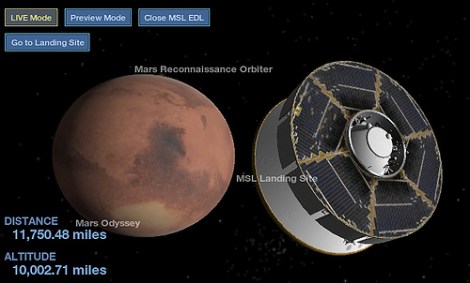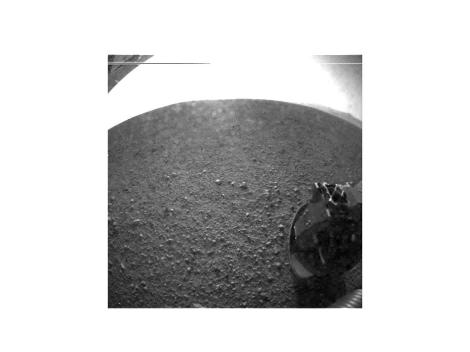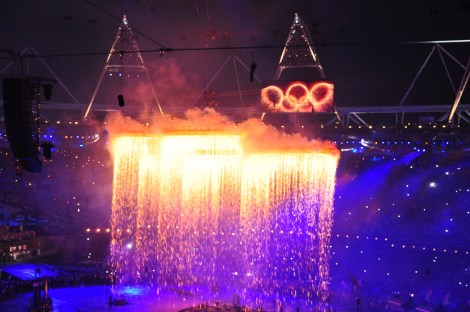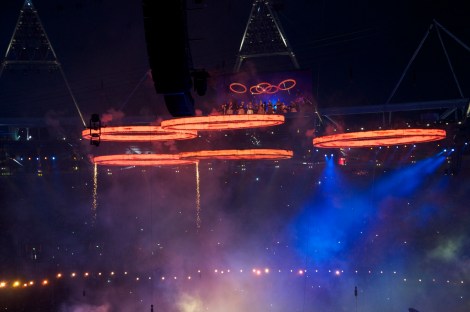If you watched the Olympic opening ceremonies (or, you know, have access to the internet), you’ll recognize this photo.
The five rings, showering sparks as though newly forged, hung in the center of Olympic Stadium. When the sparks slowed and then stopped, five glowing Olympic rings hung in the sky.
But there was a bug. One or two of the showers didn’t stop. The rings hung there — sensational, massive, amazing — but with a glitch, a pimple on the face of the whole affair. This little spout of flame. This one little problem. What does $42 million buy you? A nearly perfect display.
I couldn’t help but think about that little glitch last night — at 1 in the morning Eastern — as the Mars Science Laboratory (MSL) neared the red planet.
MSL launched last November, on a mission to gently set the “Curiosity” rover on the surface of Mars. A few months ago, NASA’s Jet Propulsion Laboratory released this video, “Seven Minutes of Terror,” explaining the various enormously complex series of events that needed to take place for Curiosity to complete its landing. Jettisoning the carrier that moved it through open space, dropping its heat shield, then deploying a “sky crane” that would lay the car-sized rover on the surface of the planet before flying away. All of this had to happen in a seven minute window — without any contact with Earth.
It’s impossible to believe that it could work. That we could plan and build this nesting-doll piece of technology, launch it into space, land it in the spot we picked, and have it all still be working at the end. Fifty years ago, the idea of hitting Mars with anything, anywhere was pretty optimistic. One hundred years ago, leaving the atmosphere was an impossibility. But this was what we decided to do. Do the math, build it, throw it up there.
“The accuracy we have to point to be at the right angle is equivalent to me being in Los Angeles and hitting a golf ball to land in a hole on St Andrew’s golf course in Scotland,” [Charles Elachi, director of Nasa’s Jet Propulsion Laboratory,] said.
NASA created an app that allowed you to track the approximate location of the MSL as it neared the planet. Watching it was incredible: a combination of a Times Square ball drop and going in for your first kiss. 10,000 miles from landing. 5,000. 2,000. Entry into the atmosphere.

And all the while that sense of possible failure. That little stream of fireworks, one simple mistake, could send the entire $2.5 billion package slamming into the reddish dust. 1,000. 500. As you watched, remembering that the information NASA was getting was delayed 14 minutes, the time it took radio waves to reach from Mars back to Earth. Fourteen minutes of watching the MSL’s shadow near the landing point; 14 minutes during which the rover could be lying in a crumpled heap. Fourteen minutes during which one little sparkler of error could have doomed the entire thing.
It didn’t.
Within minutes, Curiosity sent back its first image: a lonely wheel on a rocky expanse.

Mars. (Photo by NASA.)
Now, the rover will explore [PDF]. Much bigger and with more robust instrumentation than the smaller rovers that preceded it, it will test rocks, take chemical samples of its surroundings, send back more and more images of the planet in our solar system most like our own.
For all of the tiny, myriad things that could have gone wrong, it didn’t. Curiosity, a roving science station named by a kid from Kansas, was a flawless performance. A moment of triumph for humanity that the Olympics couldn’t possibly match.





